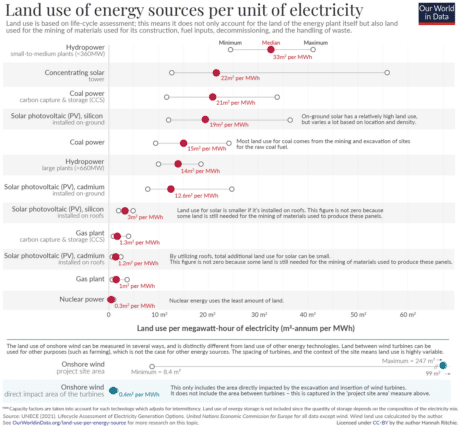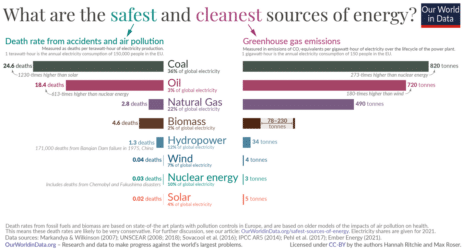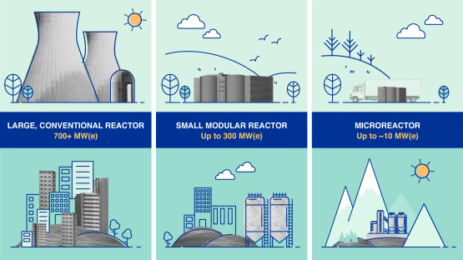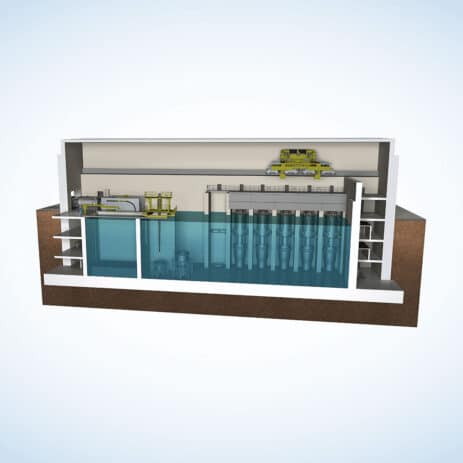Our current networked world primarily relies on the ubiquitous architecture of data centers. These data centers power our digital economy and use a considerable part of the world’s energy.
Numerous studies may differ in specifics, yet they broadly agree that data centers consume about 2% of the world’s electricity and are responsible for around 2% of all greenhouse gas emissions. Remarkably, their environmental imprint rivals that of the entire aviation sector. However, it’s essential to note that such estimates are derived from somewhat incomplete datasets, leading to unpredictability in our understanding of their true impact. Despite this, there’s no doubt that data centers have a significant ecological toll.
Consequently, the pressing challenge to secure sustainable energy solutions for data centers has surfaced. It’s an issue garnering attention as the tech industry grapples with balancing relentless growth and digital demand with the imperative to preserve our planet’s health.
Cloud providers are launching several initiatives to build greener data centers. They are utilizing renewable energy sources such as solar and wind power and cutting-edge technologies such as artificial intelligence (AI) for energy management, high-efficiency servers, and innovative cooling systems. Many data centers are being built in colder places to save electricity, and companies like Google are employing seawater for cooling, displaying creative environmental solutions.
Microsoft, a well-known cloud provider, has been credited with pioneering ways for energy-efficient data centers. Project Natick, which began in 2018, is an example of an innovative project where a prototype data center was installed near the Scottish shore and powered entirely by offshore wind and tidal turbines. Using naturally cold ocean water for cooling, the data center used significantly less energy than its land-based rivals.
Yet, the company is contemplating adopting nuclear energy to power data centers. Its energy density and zero-emission coefficient undoubtedly justify the push for nuclear energy.
The case for nuclear power
- It is the only carbon-free energy source capable of producing power day and night, virtually anywhere on the Earth during all seasons.
- Nuclear power eliminates the intermittent nature of other renewable sources, such as solar and wind. Remember that the sun does not always shine, and the wind does not always blow! Nuclear power can create electricity 24 hours a day, seven days a week, maintaining a steady power supply, which is critical for the continued functioning of data centers.
- Nuclear power plants are very energy-dense, meaning they can produce large quantities of energy from small amounts of “fuel.” For example, a single uranium fuel pellet, about the size of a pencil eraser, generates energy equivalent to one ton of coal, 149 gallons of oil, or 17,000 cubic feet of natural gas.
- In addition to being energy-dense, nuclear power plants also have a long lifespan. A typical nuclear power plant can operate for 60 years or more. Nuclear power plants can produce vast amounts of electricity without requiring extensive new construction.
- While nuclear power plants demand a significant amount of material to build, the amount of energy produced for each pound of material that goes into building and running the power plant is much more than other energy sources. For example, solar and wind farms generally need a vast extension of land generating power only 25 to 40 percent of the time, versus 90 percent for nuclear.

Overcoming obstacles through innovation
Despite the discernible advantages, the transition to nuclear power has been difficult. Nuclear waste disposal is a major concern, and human error could lead to disastrous disasters. The risk of catastrophic failure, as demonstrated by Chernobyl, Three Mile Island, and Fukushima, drew attention to the inherent dangers of nuclear power. For many countries and businesses, the initial investment costs of developing nuclear reactors are prohibitively expensive.
Bill Gates argues in his famed book, ‘How to Avoid a Climate Disaster,’ that we have simply stopped making progress at addressing these concerns. He compares it to the growth of the automobile industry and the advancements made to keep up with risks. Rather than prohibiting vehicles because of increased accidents, we used innovation to make them safer. To avert and reduce the number of deaths caused by car accidents, we developed seat belts, airbags, and, most importantly, traffic laws.
Nuclear energy kills far fewer people than automobiles. It kills far fewer people than any other fossil fuel (when all air pollution deaths are considered). Nuclear energy requires innovation to become safer and more broadly available, and it is heartening to see worldwide initiatives in this direction.

Returning to the original topic of this post, Microsoft intends to combine small modular reactors (SMRs) and microreactors to power data centers hosting Microsoft Cloud and AI, an innovative strategy toward safer and more accessible nuclear power.
What are SMRs, and what are their advantages?
Small modular reactors (SMRs) are compact, advanced nuclear reactors with a power capacity of up to 300 MW(e) per unit, roughly one-third that of traditional reactors. These reactors are small and modular by design, enabling factory assembly and transportation as a single unit. They generate heat via nuclear fission to produce significant low-carbon electricity.

The upsides of SMRs:
- Because of prefabrication, SMRs are compact, modular, appropriate for various locations, and cost-effective.
- They can be easily scaled, i.e., added in stages based on energy demands and integrated into existing grids or installed off-grid.
- SMRs are less complicated than traditional reactors, emphasizing passive systems for greater safety. This eliminates or considerably reduces the risk of radiation released into the environment and the public in the event of an accident.
- SMRs require less frequent refueling, possibly every 3 to 7 years, as opposed to every 1 to 2 years for conventional reactors. Some SMRs can operate for up to 30 years without refueling.
With this technology, SMR power plants can be built right next to data centers, which is Microsoft’s goal. This proximity alleviates any concerns about power transfer over long distances. And we can, through technologies like digital twins, calculate the embodied carbon of any SMRs and compensate for them.
The status of SMRs
Numerous public and private institutions are working to realize SMR technology this decade.
SMRs are currently under construction or getting licensed in countries including Argentina, Canada, China, Russia, South Korea, and the USA.
The world’s first floating nuclear power plant, Russia’s Akademik Lomonosov (operational since May 2020), utilizes two 35 MW(e) SMRs. Similarly, China Huaneng Group’s 200MW SMR in Shidao Bay began feeding power to the Shandong province grid in December 2021. NuScale Power, an American company, anticipates its SMR design will be operational by 2029. A compact reactor such as the one offered by NuScale can deliver 154 MW(e) for 12 years without refueling. Its largest microreactor, Voygr-12, occupies a mere 0.05 square miles, starkly contrasting wind farms requiring 94 square miles and solar farms using up 17 square miles.

Unleashing the sun’s power on Earth
Another enticing alternative approach to nuclear power is nuclear fusion, inspired by the same underlying process that drives the sun. The release of energy occurs when hydrogen isotopes collide and fuse to generate helium. The fuel would be inexpensive and plentiful since it would run on readily available components such as hydrogen.
We have enough hydrogen to supply the world’s energy demands for thousands of years since it can be harvested from seawater. Fusion waste products would be radioactive for a considerably shorter period and at a much lower level than fission waste – roughly as harmful as radioactive hospital waste. While this technology is still in the experimental phase and may take some time to fully develop for commercial use, progress made by organizations such as ITER (a collaboration between six countries and the European Union), Joint European Torus (JET), and the National Ignition Facility suggests that the future with this clean and virtually limitless energy source is becoming more real.
Conclusion
In our ever-growing, digitally interconnected world, our energy needs are skyrocketing. Slowing down is not an option – progress hinges on our tech advances. Our task? Innovate and find cleaner, more dependable energy, like nuclear power, finally decoupling energy increasing production from energy increasing emissions. Nuclear power comes with challenges: waste management, cost, and safety. But embracing these challenges fuels innovation.
Nuclear-powered data centers can become a reality with more research, tech improvements, and policy support. This isn’t just a step towards a carbon-neutral future but a leap towards a technologically advanced society. We’re not just here to exist but to evolve.





